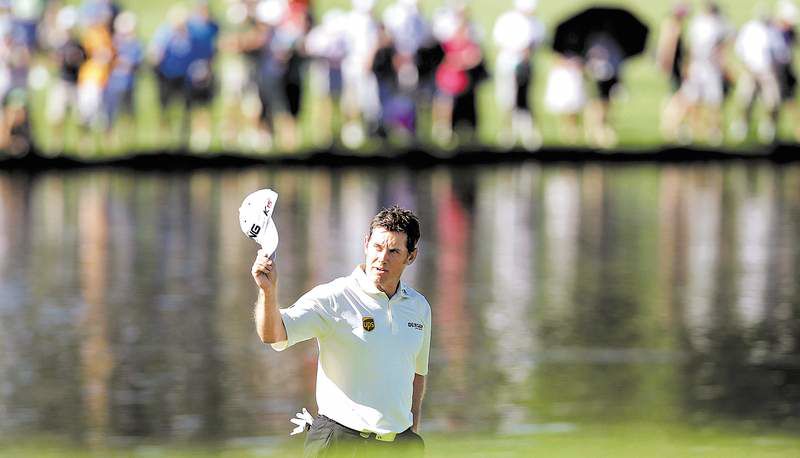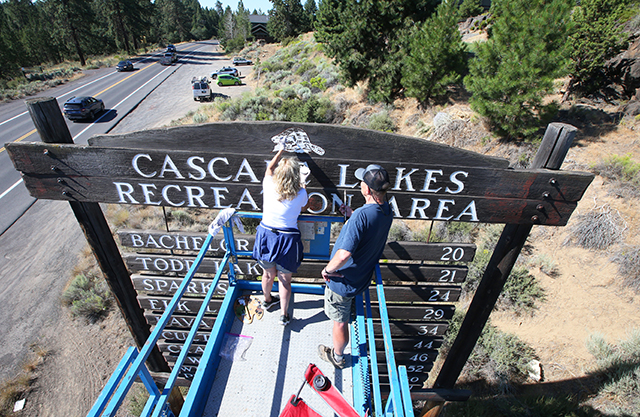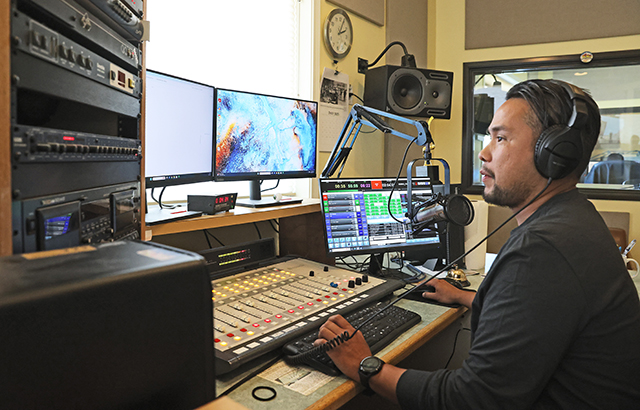Top golfers increasingly skip PGA Tour to play in Europe
Published 4:00 am Wednesday, December 8, 2010

- British golfer Lee Westwood, the No. 1 player in the world, is one of many golfers that could have full PGA Tour status, but they choose to play in Europe for the competition, and for appearance fees.
THOUSAND OAKS, Calif. — Larry Thiel was at the Chevron World Challenge peddling free spa treatments and fingertip concierge service to 18 golfers who averaged $3 million in official prize money this year.
For Thiel, the tournament director of the Bob Hope Classic, it was an uphill battle, perhaps more futile than trying a barefoot climb of the craggy Santa Monica Mountains, which rise above Sherwood Country Club here. His tournament next month, once a crown jewel of the PGA Tour’s schedule, falls at the same time as a European Tour event in Abu Dhabi, which offers lavish appearance fees to attract a world-class field.
Trending
“We never mention the cash,” said Paul Casey, an Arizona-based Englishman. “It shouldn’t be about that. For me, it’s about challenging yourself against the best fields.”
So where will Casey open his 2011 season? Not in the United States, but in the United Arab Emirates.
“Some players like to travel around the world and obviously get paid a lot of money to do so,” said Graeme McDowell, the reigning U.S. Open champion from Northern Ireland. “Unfortunately, that’s what we have to do in Europe to get the best players to come across sometimes. The appearance-money thing is an interesting debate. It’s sort of the rich events kind of get richer.”
Off Broadway?
The PGA Tour long has been regarded as golf’s Broadway stage, a showcase for the world’s best professionals. A few bright bulbs, though, will be missing from its marquee in 2011.
Three European golfers in the world top 10, including the No. 1-ranked player, Lee Westwood of England, will not be members of the PGA Tour next year, leading some to wonder if golf’s center stage could be shifting overseas.
Trending
It is not the first time European golfers have washed ashore in the United States, made a huge splash and left like the tide. In the late 1980s, Seve Ballesteros, Bernhard Langer, Nick Faldo and Ian Woosnam — who all rose to No. 1 — rejected the PGA Tour when they could not reach a compromise with Deane Beman, the commissioner at the time, over the minimum number of tournaments required to maintain eligibility.
Westwood effectively relinquished his membership in 2008 by failing to meet the 15-tournament minimum.
Rory McIlroy, of Northern Ireland, who is ranked 10th, decided not to renew his membership after playing in 16 events this year.
“It’s not as if I’m not joining the PGA Tour to make a statement,” he said, adding: “It doesn’t matter where you play. You just want to play good golf. The PGA Tour won’t miss me because no one player is bigger than the tour.”
Thanks, but no thanks
Then there is Martin Kaymer, of Germany, the No. 3 golfer, who chose not to join the PGA Tour even though he earned a five-year exemption for winning this year’s PGA Championship.
Kaymer, who lives part of the year in the United States, told reporters in Europe: “I consider the European Tour as my home — that is where I feel comfortable. I think you play against the best players in the world, and schedulewise, it doesn’t fit for me next year to play on the PGA Tour.”
For most events, world ranking points are calculated based on the strength of the field. With seven of the top 11 players currently hailing from Europe, the best tournament field on any given week can no longer be assumed to be in the United States.
Even the Players Championship, commonly described as golf’s fifth major because of the depth of its field, is feeling some shock waves from the shifting world order; McIlroy has said he is not sure his schedule can accommodate the tournament in 2011.
“I think it’s an eye-opener when you get those three guys, as good as they are and the respect they’ve garnered,” said Jim Furyk, an American who is No. 6 in the world, “but I think the story is getting blown out of proportion.”
The rejections by Westwood, McIlroy and Kaymer — which overshadowed the decision by McDowell, who keeps a home in Florida, to join the PGA Tour — come as golf in Europe remains flush with jingoistic fever.
Europe vs. America
For those keeping score, it is Europe 2, United States 1 in the 2010 majors (McDowell and Kaymer versus the Masters winner Phil Mickelson), and Europe 14 1/2, the United States 13 1/2 in the Ryder Cup.
“Right now, there’s a bunch of great European players,” Casey said. “They’ve had wonderful success this year.” He added: “But it’s just one year. Let’s see what happens next year, and if this is a trend that happens for five, six years, then of course there’ll be a shift.”
The top golfers from the United States over the years generally have been loath to leave the cushy confines of the PGA Tour — with its manicured courses, creature comforts and large purses — to play in Europe, where the language barrier is another hazard to negotiate and the amenities are fewer.
“I don’t know if there will ever be a situation where Europe is the more favorable place to play,” the Englishman Luke Donald said.
“If money dries up over here and there’s money in Europe, the balance could shift.”
U.S. stars defecting?
In the summer, the American rising stars Dustin Johnson and Rickie Fowler (whom the tour named its rookie of the year on Saturday) remained in Europe after the British Open to compete in the Scandinavian Open, opposite the Canadian Open on the PGA Tour. Asked why he picked the tournament, Johnson shrugged and said, “Because they wanted me to come over.”
Having enjoyed his foray into the European Tour, Johnson added, “I’m going to play some more over there.”
Casey said, “If I was a tournament sponsor or promoter in Europe, I’d be trying very hard to get guys like Rickie over to play.”
How would he do that? Casey rubbed fingers together in the universal sign for money.
“I think we all know what goes on around the world,” he said.
The marquee names, led by Tiger Woods, are thought to receive guarantees of $1 million to $3 million to grace a tournament abroad. Major winners can command up to $500,000, and rising stars receive in the low six figures.
Appearance fees are verboten on the PGA Tour, although there are ways around it. A tournament sponsor can arrange a Monday pro-am, for example, and pay marquee players six figures to take part in it, as reportedly happened in 2005 with the Ford Motor Co. at the tour stop at Doral.
Trying to sell
Thiel came to the Chevron World Challenge, which features 18 golfers ranked in the world’s top 50, armed with glossy booklets promoting The New Hope.
He pitched the Bob Hope Classic as a weeklong pampering experience that includes, among other perks, free unlimited spa services for the players’ families, deeply discounted rates on resort rooms, extended day-care hours and 24-hour concierge service.
Thiel said he left with four unofficial commitments and a definite maybe.
“I’m going to take the hand that’s dealt me,” he said, “and make it as successful as I can.”







